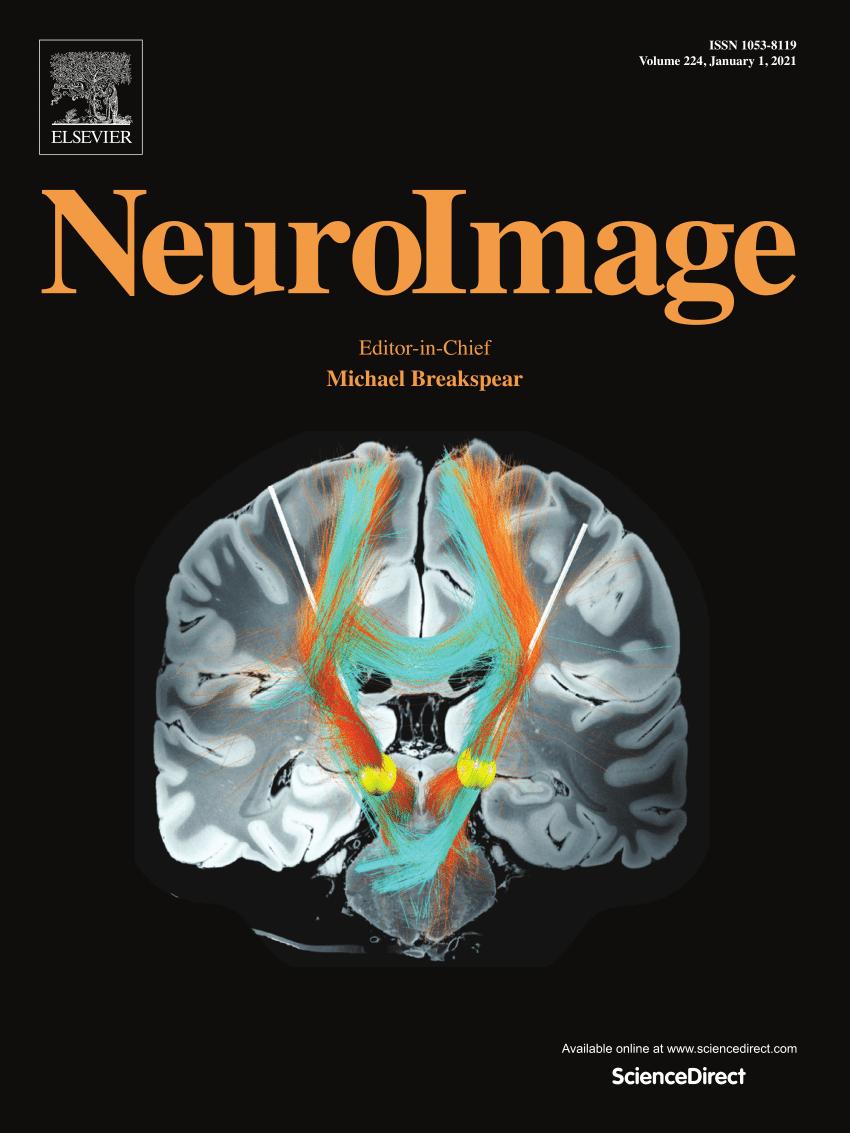Peripersonal and extrapersonal space encoding in virtual reality: Insights from an fMRI study
IF 4.5
2区 医学
Q1 NEUROIMAGING
引用次数: 0
Abstract
The brain processes objects in reachable peripersonal space and non-reachable extrapersonal space in different neural networks. In contrast to extrapersonal space, spatial processing in peripersonal space is linked to the activation of affordances in dorsal visual pathways. However, the literature on how object characteristics like size, graspability and stereoscopic presentation influence object processing in virtual environments is still unclear.
In the current study, 44 healthy participants performed a visual discrimination task involving graspable objects presented in peripersonal space and extrapersonal space. The paradigm was presented via MRI-compatible goggles during fMRI scanning. The four sessions alternated between monoscopic and stereoscopic presentations and stimuli varied within the sessions in apparent distance, size, and orientation. To validate the effect of distance, the pixel size of objects was also controlled. Stereoscopic presentation enhanced dorsal stream activation, particularly in V5/MT, lateral occipital cortex and the posterior intraparietal sulcus, associated with depth processing, suggesting increased peripersonal space processing. In addition to that, analyses revealed characteristic bilateral activation patterns of primary to tertiary visual areas, extending dorsally from the lateral occipital cortex to the posterior intraparietal sulcus for stimuli in peripersonal space, while extrapersonal space activated mostly ventral regions of the tertiary visual cortex. Notably, as the first study to control for pixel object size, these patterns persist, indicating that stimuli in peripersonal space engage the dorsal visual stream, potentially reflecting action-oriented and grasping feature encoding linked to their interactive affordances, while stimuli in extrapersonal space engage ventral regions primarily mediating semantic aspects and scene analysis.
虚拟现实中的近个人和超个人空间编码:来自功能磁共振成像研究的见解。
大脑在不同的神经网络中处理可到达的周围空间和不可到达的超个人空间中的物体。与超个人空间相比,周围空间的空间加工与背侧视觉通路的可视性激活有关。然而,关于物体的大小、可抓性和立体呈现等特征如何影响虚拟环境中物体处理的文献尚不清楚。在目前的研究中,44名健康的参与者进行了一项视觉辨别任务,涉及在个人周围空间和非个人空间中呈现的可抓取物体。在fMRI扫描期间通过mri兼容护目镜呈现范式。在四组实验中,单视和立体呈现交替进行,刺激在视觉距离、大小和方向上都有所不同。为了验证距离的影响,还控制了物体的像素大小。立体呈现增强了背流激活,特别是V5/MT、枕侧皮质和顶内后沟,与深度加工相关,提示周围空间加工增加。除此之外,分析还揭示了初级到三级视觉区域的特征性双侧激活模式,在个人周围空间的刺激下,从枕侧皮层向背侧延伸到顶内沟后部,而个人外空间则主要激活三级视觉皮层的腹侧区域。值得注意的是,作为第一个控制像素对象大小的研究,这些模式持续存在,表明个人周围空间的刺激参与了背侧视觉流,潜在地反映了与其交互能力相关的动作导向和抓取特征编码,而个人外空间的刺激参与了腹侧区域,主要介导语义方面和场景分析。
本文章由计算机程序翻译,如有差异,请以英文原文为准。
求助全文
约1分钟内获得全文
求助全文
来源期刊

NeuroImage
医学-核医学
CiteScore
11.30
自引率
10.50%
发文量
809
审稿时长
63 days
期刊介绍:
NeuroImage, a Journal of Brain Function provides a vehicle for communicating important advances in acquiring, analyzing, and modelling neuroimaging data and in applying these techniques to the study of structure-function and brain-behavior relationships. Though the emphasis is on the macroscopic level of human brain organization, meso-and microscopic neuroimaging across all species will be considered if informative for understanding the aforementioned relationships.
 求助内容:
求助内容: 应助结果提醒方式:
应助结果提醒方式:


